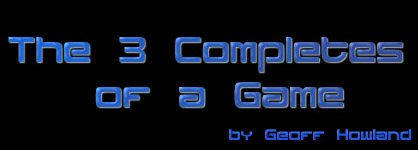11/10 - 11/12 @ Montréal, Canada
12/5 - 12/7 @ Shanghai, China
12/24 - 12/27
2/28 - 3/4 @ San Francisco, CA
More events...
2406 articles in the reference section.
Help us fight cancer!
Join SETI Team GDNet!

|
The stages of content complete are a lot simpler to the project manager/lead than programming is, as a piece of content (art, sound, map) is either usable or not. There is a revision process to these as well, but the creation process of art, sounds and levels is a not subject to logic flaws. What you see is what you’ve got, where code can be broken even if it looks correct initially. The trick of getting content complete is to fully understand all of your content needs. Several times I lost sight of what it really took to be content complete on my projects because I thought I had all the art, sounds and music done and overlooked the text for the user interfaces, instructions, help. Different types of game content also was overlooked, like extra obstacle information, special cases for graphics, and management of some content I didn’t plan an easy way to integrate into the code. What this shows is that there wasn’t enough planning in the design stage of the product as all of these elements should have been documented in how they would be stored, used and accessed. Just knowing this isn’t enough if you don’t put it into practice regularly, so it’s not something you only think about once and then you are done. You must continually recheck your content needs to make sure everything was accounted for. If you add or change any part of your product you can drastically alter the content you need, the way you'll need to add that content, and other pieces of the product that interact with it. Each time you make a change, you should sit down and do a mini-redesign. Think about all the pieces of the product again and determine if they will function differently or need different information than they did before the change. |
|||||||||||
|
|
|||||||||||